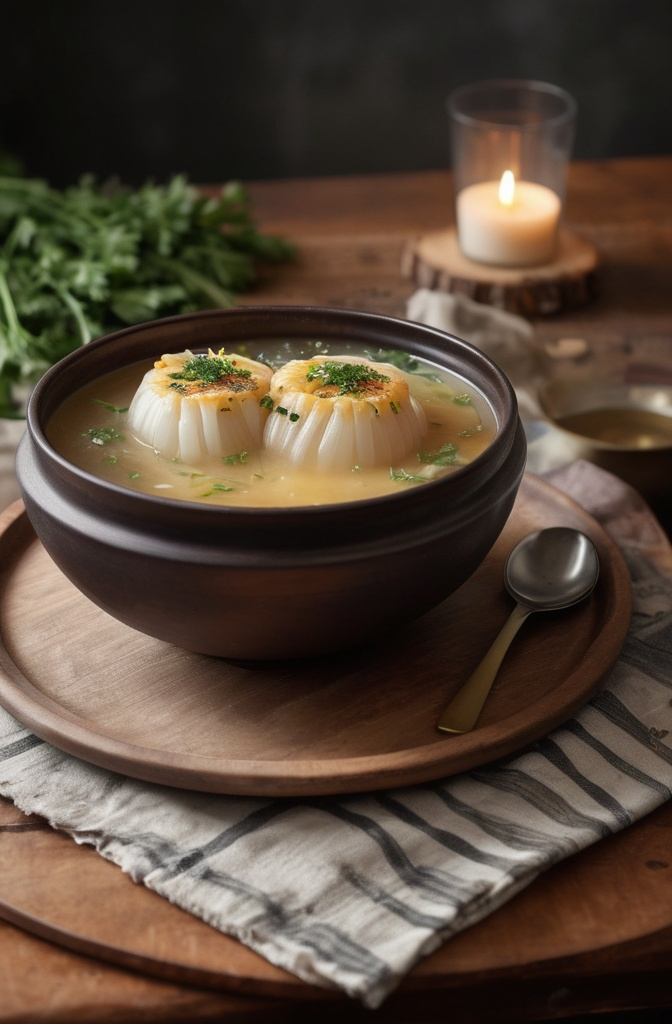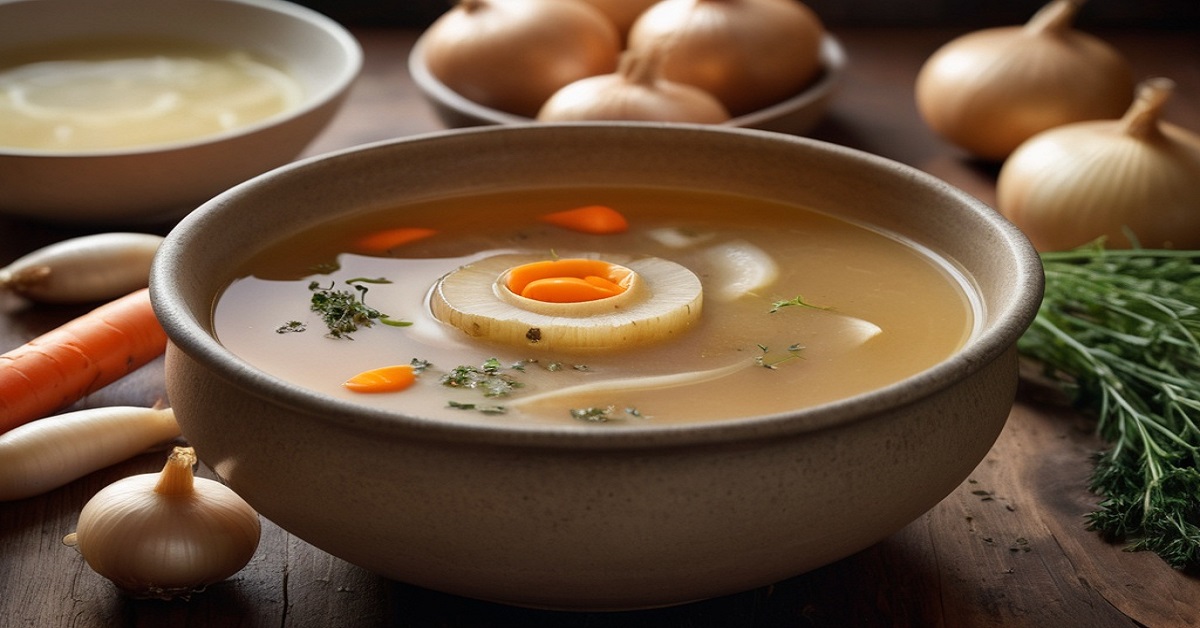Onion Boil Recipe one late night in Louisiana, I saw an old man boil onions in a dented cast iron pot like it was ritual. No spice rack, no recipe card, just onions, water, and memory. He swore it could fix heartbreak. At the time, I didn’t believe him. Now I do.
The onion boil is not glamorous. It doesn’t strut like confit or whisper like consommé. It is primal. A dish built on water, heat, and the slow unraveling of something sharp into something sweet.
In many parts of the American South, it’s both folk medicine and comfort food. In Eastern Europe, it’s peasant cooking at its most poetic. Across the world, people have tossed onions into boiling water for a hundred different reasons and most of them good.
This is not just a side dish. Done right, an onion boil is a standalone experience. Smoky, sweet, herbal, spicy whatever you need it to be. It’s also a brilliant technique base: boil onions the right way, and you’ve already started a broth, a braise, a soup, even a sauce.
Let’s dive in.
What Is an Onion Boil, Really?

At its core, an onion boil is simply onions simmered in seasoned water until they soften, mellow, and take on flavor. But don’t let the simplicity fool you.
The real magic is in how you build the pot. Add aromatics. Add acid. Spice. Smoke. Even booze. You’re not just boiling onions you’re coaxing depth out of water and sulfur.
Some boil onions to serve as a side soft, fragrant bulbs drizzled with butter or olive oil. Others use it as a base for seafood boils, braises, or rustic soups. My version? A standalone dish and a base for about twenty others. One pot. Endless paths.
Ingredients & Substitutions
Here’s what you’ll need for a killer onion boil.
- 6 medium yellow onions, peeled, halved (not chopped)
- Red onions work too, but they bleed a bit. Sweet onions? Beautifully mellow. Avoid white they get bitter when overcooked.
- 6 cups water or light stock
- Go stock if you want richness. Go water if you want purity.
- 1 tablespoon kosher salt
- Taste it. Adjust. Always trust your tongue more than the recipe.
- 1 teaspoon cracked black pepper
- Whole peppercorns if you want gentler heat.
- 3 cloves garlic, smashed
- Optional, but garlic never made anything worse.
- 2 bay leaves
- Turkish or Californian both fine. Just don’t leave them in forever. They get woody.
- 1 tablespoon apple cider vinegar or lemon juice
- This acid helps break down the onions and balance their sweetness.
- Optional:
- 1 teaspoon smoked paprika – Adds depth. Think campfire.
- 1 dried chili – Heat wakes up the broth.
- A splash of dry white wine – Gives it a French soul.
Ingredient Tips
- Use firm, heavy onions. Soft ones go mushy too fast.
- Don’t rush peeling. Leave the root base intact it holds the halves together during boiling.
- Avoid dried onion flakes or powder. This dish is about fresh onion flavor in its purest form.
Step-by-Step Instructions
1. Prep the onions
Peel your onions. Keep them halved, root side on if possible it’s neater. Rough chop loses the poetry. Also, the more intact, the more controlled the cook.
Let them sit out for 10–15 minutes after cutting. This reduces the eye-sting. No, really it works.
2. Build the pot
Use a wide, heavy-bottomed pot. Dutch ovens work beautifully. Add water or stock. Add salt, pepper, bay, garlic, vinegar. Bring to a lazy boil not a violent one.
Add onions, cut-side down. Don’t crowd them. They need space to bloom.
3. Simmer slow
Reduce to a low simmer. You want the water just kissing the edges of the onions, not thrashing them.
Cover loosely. Let them simmer 35–45 minutes, until they slump when nudged with a spoon. Not disintegrate just yield.
Halfway through? Flip them. The cut side gets lovely and tender.
4. Taste and balance
Taste the broth. Adjust seasoning. Add acid if it’s flat. A pinch of sugar if it’s bitter. A splash of wine if you’re feeling fancy.
Pull onions when they’re tender but still hold their shape. Serve hot, warm, or cool—this dish forgives temperature better than most.
Variations
- Rustic French twist: Add thyme, a splash of white wine, and finish with a pat of butter.
- Southern boil base: Add crab boil seasoning, sausage, and potatoes. Go full bayou.
- Vegetarian broth builder: Add leeks, celery, and mushroom stems for a deep stock.
Common Mistakes
- Boiling too hard: Shatters the onions. Makes the broth cloudy.
- Under-seasoning: Onion needs salt to shine.
- Using old onions: They taste musty. Always fresh.
Cooking Techniques & the Science Behind It
Why boil onions?
Onions contain sulfur compounds those are what make you cry. Boiling breaks them down, especially in the presence of acid, which accelerates mellowing.
You’re also extracting natural sugars. As they simmer, those sugars seep into the broth, creating an umami-rich, slightly sweet base. That’s why the broth tastes better than the sum of its parts.
If you add fat at the end (butter, olive oil), it captures those volatile flavors and holds them longer on the palate. Fat is flavor glue. Don’t forget it.
Tools That Matter
Use a heavy-bottomed pot. Thin pots create hotspots your onions won’t cook evenly.
Tongs help you flip onions gently, without mangling them.
Optional but awesome: a ladle with a pouring spout, to serve the broth cleanly.
Serving & Pairing Suggestions

Presentation
Place the boiled onion halves in shallow bowls. Ladle some of the seasoned broth over top. Drizzle with olive oil or melted butter. Top with herbs if you like flat-leaf parsley, chervil, or dill.
Serve with grilled bread. Or over mashed potatoes. Or alongside a roast.
Pairings
- With roast pork – The sweetness of the onion balances the richness of the meat.
- With seared scallops – That broth? Pure gold with seafood.
- With Riesling or dry cider – The acidity cuts through the mellow broth beautifully.
Got leftovers? Blitz ‘em into a puree. Use as soup base. Add cream and serve cold like a vichyssoise cousin.
FAQs About Onion Boil Recipe
1. Can I make onion boil ahead of time?
Absolutely. It keeps for 3–4 days in the fridge. Reheat gently, not hard boil it ruins the texture.
2. Can I use red or white onions?
Red onions give a nice color and are sweeter. White onions are sharper and can get bitter. Stick with yellow or sweet varieties if it’s your first go.
3. Can I freeze boiled onions?
Surprisingly, yes. Freeze them in their broth. Just know the texture softens more upon thawing better for soups or purees.
4. What can I do with the leftover broth?
Use it as a base for soups, risottos, or to cook grains like barley or farro. It’s basically liquid gold.
5. Can I add protein?
Definitely. Sausages, smoked tofu, shellfish drop ‘em in during the last 10–15 minutes of the simmer. They’ll soak up the flavor without overcooking.
Want a photo guide or printable version of this recipe?
Final Tips: Why This Recipe Matters
The onion boil is proof that technique outshines ingredients.
You start with something harsh and tear-inducing. You end with a broth that tastes like a memory you forgot you had. It’s one of those dishes that reminds you: cooking isn’t just transformation it’s redemption.
Don’t overthink it. Don’t under-season it. And whatever you do—don’t skip the acid.
Once you’ve mastered the onion boil, you’ll start seeing uses for it everywhere. Trust me.




